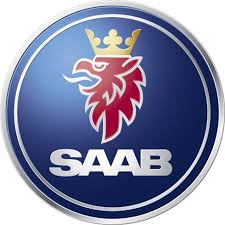9000 L4-2290cc 2.3L DOHC (1991)

CAMBER (WHEEL INCLINATION)
Camber (B) refers to the angle formed between the wheel and the vertical (A), No. 1, as shown. If the wheel leans outwards, the camber angle is said
to be positive (+), if it leans inwards, the camber angle is said to be negative (-). The Saab 9000 has a negative camber angle.
The camber angle is not adjustable on Saab 9000.
CASTER (AXLE INCLINATION)
Castor angle (C) is the angle at which the swivel pin deviates from the vertical (A) when seen from the side, given in degrees. When the swivel axle is
inclined rearwards, No. 2 as shown, the castor is said to be positive. When it is inclined forwards, the castor is said to be negative. The Saab 9000 has
positive castor angle.
The castor allows the wheel to be braced when moving directly forwards and to be relaxed when steering. Also, large castor improves the steering
wheel return action.
The caster angle is not adjustable on the Saab 9000.
KING-PIN INCLINATION (KPI)
King-pin inclination (D), No. 3, as shown, is an imaginary line that passes through the centre of the bail bearing at the top of the MacPherson strut and
the centre of the ball joint on the suspension arm. This inclination is measured against the vertical (A) and given in degrees.
Inclination inward is positive inclination and outwards is negative.
A correct king-pin inclination produces lighter steering and the wheels return to a correct position when the car returns to a straight heading.
King-pin inclination is not adjustable on the Saab 9000.
